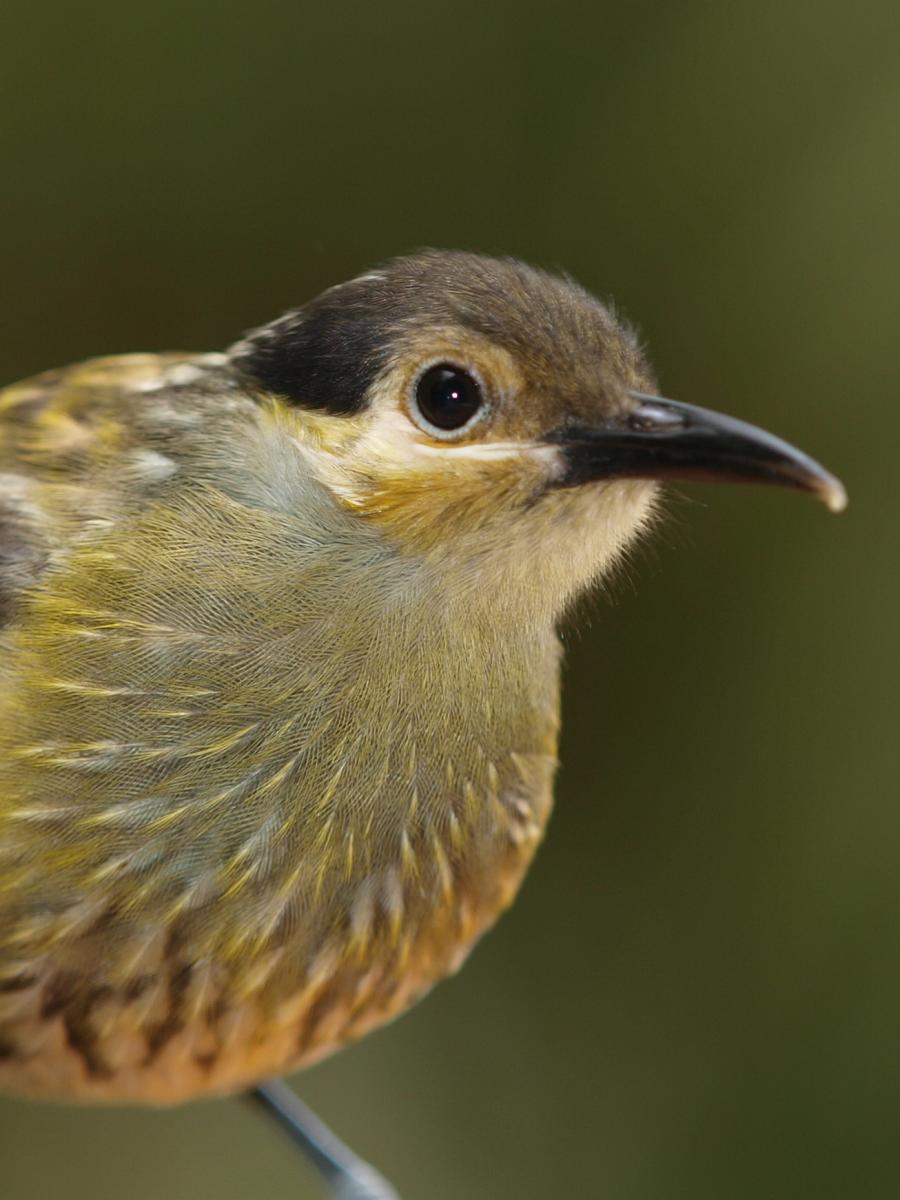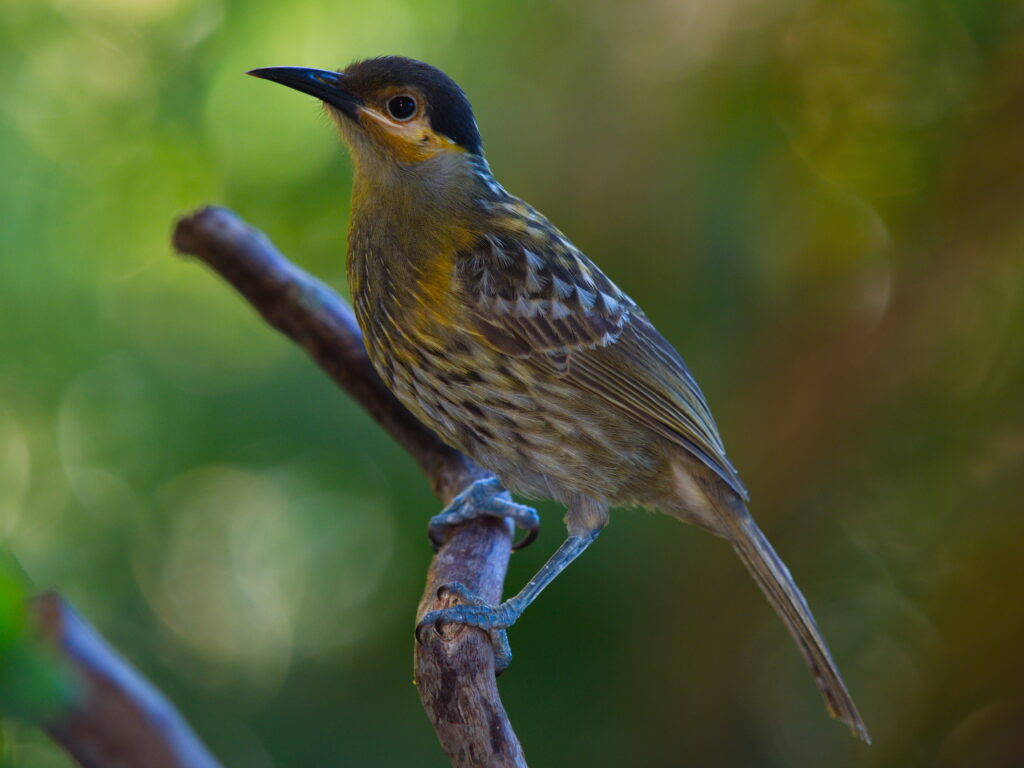Macleay’s Honeyeater (Xanthotis macleayanus) is one of Paluma’s most common birds in our gardens and at feeders. While it eschews the dramatic displays and gaudy colours of some of our other regulars around the village, dedicated observers grow to appreciate its soft pastel colours and tartan pattern. It is also special in being one of 13 bird species that are endemic to (only found in) the Wet Tropics. Its distribution extends from Paluma range in the south to Cooktown in the north.

In the forest, Macleay’s Honeyeater is found mostly in the forest canopy where it forages for a range of insects and spiders (its predominant food) as well as nectar and fruit. It is most abundant at lower altitudes, but you would never know it from the vantage point of a typical porch in the village, where it is one of the most common visitors at feeders and is easily encouraged to eat from a hand. In town, it will eat a variety of food on offer although providing processed food to native wildlife is never a good idea.

Macleay’s Honeyeater commences breeding in September. Nests are generally located in very dense vegetation in the canopy (7.5m and above) but occasionally lower. The female is the primary incubator of the eggs, but both parents feed the young.
The genus Xanthotis is derived from the Greek xantho (yellow) and otis (ear) which is a distinctive character of this species. Both the common name and scientific name also pay homage to Sir William Macleay (1820-1891). He was a Scott who emigrated to Australia as a young man. After achieving financial security as a pastoralist (and through marriage) he became a politician and then spent most of the rest of his life indulging in his passion for natural history. He was the founding President of the Linnean Society of NSW, a prolific author, a generous patron of the sciences and an avid collector. His collections were donated to the University of Sydney after his death and formed the basis for the Macleay Museum.
The scientific name is sometimes written as Xanthotis macleayana but this is an error and also a faux pas. Those readers old enough to have taken Latin in school might recognise that the suffix “ana” is used to denote female characteristics whereas “anus” is masculine. I doubt very much that Sir William identified himself as a female!
Text and Photos by Jamie Oliver
